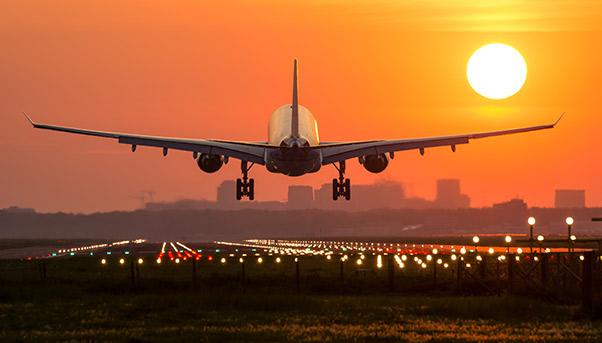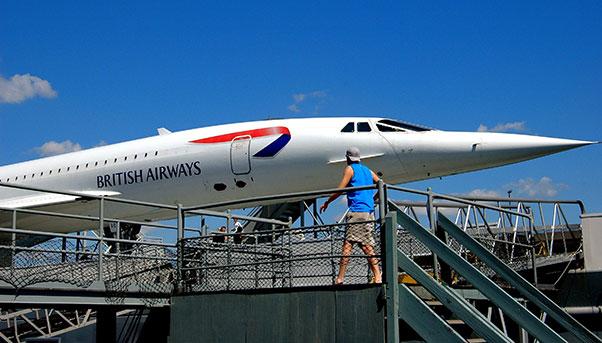
Ninety years after Charles Lindbergh’s historic flight across the Atlantic Ocean, air travel has become not only fast and comfortable but also essential to the globalised economy. A recent report by the International Air Transport Association (IATA) estimates that airlines carried 3.5 billion people in 2015 – 240 million more than the previous year. This service was thanks to nearly 10 million people working in the industry and a fleet of 26,000 planes that made 100,000 flights a day on average along 51,000 routes.
Revenue generated by the industry totalled $718 billion, mostly in the United States, still the biggest market, according to the IATA. Asian countries, meanwhile, are reporting the highest growth rates in passenger numbers. In 2015, the China-Thailand origin-destination market grew 72.9%, while that of China-Japan went up 41.8%. China’s internal market, meanwhile, was 10.6% higher.
The lower cost of fuel and higher load factors helped airlines post a net profit to $35.3 billion in real terms in 2015.
Airports, a strategic infrastructure for any economy, has also benefitted from this rise in passenger traffic. In recent years, their services have grown and their management of logistics improved.
Airports and their Private Handlers
Given their importance, airports require massive investment and constant maintenance. CAPA – Centre of Aviation, which studies the industry, calculates that about $464 billion will be invested worldwide in the coming years to manage airports and build new ones. Among the most important expansion projects is Dubai World Central for an expected $32.3 billion. Work is to finish in 2027. Then there is the expansion of the one in Hong Kong for $19.3 billion.
The presence of the private sector has also become more prevalent. In a recently published report, the Airports Council International (ACI) calculates that 614 out of 4,300 airports have private-sector participation. Although this type of participation represents 14% of the total number of airports, they manage the transfer of 40% of the global traffic. Of the 100 airports with the greatest number of transits, 46 have a form of participation with the private sector.
The region that has welcomed this type of participation most enthusiastically is Europe, where 75% of passenger traffic is handled by airports that are privatized or belong to some sort of public-private partnership. Latin America follows with 60%, the Asia-Pacific with 45%, the Middle East 13%, Africa 11% and North America 1%.

The Flight that Made History
On May 20, 1927 – at 7:52 a.m. to be exact – as some 500 people watched in anticipation – the Spirit of St. Louis took off from an airstrip at Roosevelt Field on Long Island, New York. On board was Charles Lindbergh, a postal pilot who only a year earlier had heard of the $25,000 in prize money being offered by businessman Raymond Orteig to whoever could fly across the Atlantic Ocean without making any stops along the way. The distance between New York and Paris was 3,500 miles – a significant challenge at the time given how aviation was still in its infancy.
Orteig’s offer had been standing since 1919, but nobody had dared to take it up until Lindbergh boarded the plane, his eye not only on the prize but also the history books.
The plane that Lindbergh flew was built by Ryan Airlines Corporation, while its name came from the city from where financial support for the crossing came.
As the Spirit of St. Louis plane took to the air, Lindbergh had four sandwiches, two canisters of water and 451 gallons of fuel aboard with him. He flew over Cape Cod on the U.S. northeastern coast, then Nova Scotia in the Canadian maritimes before the vastness of the Atlantic opened up before him. The hours that followed were the most difficult as fog and darkness at the end of the day reduced Lindbergh’s visibility. But the first sight of boats the following morning reassured him that he was approaching the European coast. Soon the Spirit of St. Louis was flying over Ireland, then England. Maintaining an altitude of 1,500 feet, the plane slowly made its way to France. At 10:22 p.m. – 33 hours and a half after his departure – Lindbergh landed at Le Bourget airport north of Paris. Some 100,000 people were there to greet him. It was a historic day, one that changed civil aviation forever.
From the Wright Brothers to the Concorde
Lindbergh’s successful flight is but one of a series of key events to mark the evolution of air transport. It actually began some years earlier, on Dec. 17, 1903, with a flight by the Wright brothers. Their plane managed to lift itself off the ground for just a few hundred metres, but it had enormous significance.
The First World War saw the introduction of stronger engines and a more equipped cockpit. Planes returned to their civilian role in the 1920s, dedicating themselves to carrying mostly cargo. The more dominant model was the hydroplane, which could take off and land on water, eliminating the need for a strip on land.
War returned, pushing development of the plane to the next level. It also brought into use the radar. Military innovation resulted in the construction of bigger planes for the transportation of troops.
On July 27, 1949, the first civil plane equipped with a jet engine took off from England. It was during these years that the commercial airline came into being, offering intercontinental routes. The dream of overcoming vast distances was eventually realized with the arrival of the Concorde, a supersonic plane built by an Anglo-French consortium. It went into service in 1976, symbol of the most advanced aeronautical engineering at the time. Marked by terrible events like the July 25, 2000, accident in which 113 people were killed, the Concorde made its final flight on November 26, 2003.

